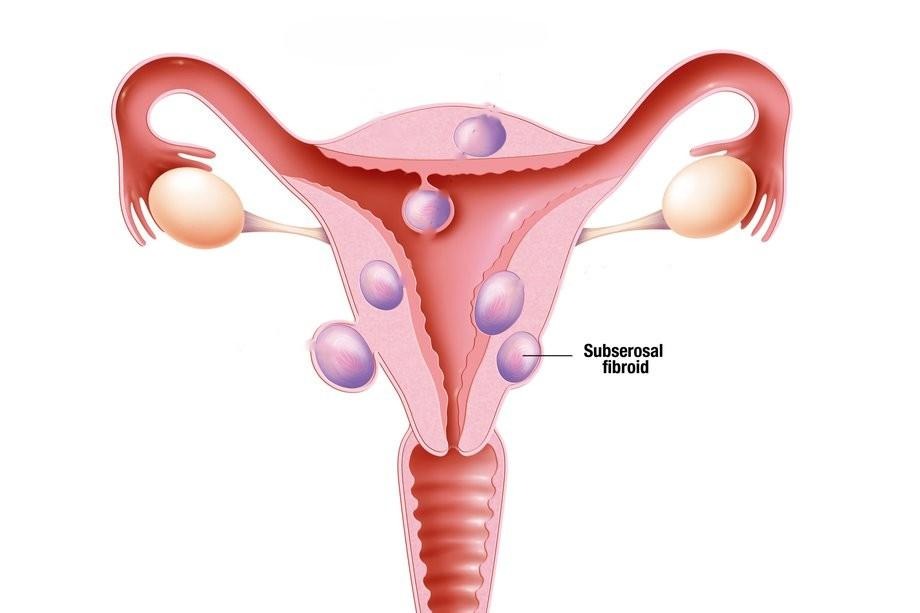What Are Subserosal Fibroids? Symptoms, Causes, and Treatment Options Explained
Many women suffer from uterine fibroids without even knowing it. These non-cancerous growths in the uterus are incredibly common and can affect women of reproductive age in different ways. Among the various types, subserosal fibroids are one of the most frequently diagnosed.
Subserosal fibroids develop on the outer wall of the uterus and often grow outward into the pelvic cavity. While they might not always cause symptoms, larger fibroids can lead to noticeable discomfort and complications if left untreated.
If you’ve been feeling pelvic pressure, bloating, or abdominal heaviness, it’s best to get evaluated early.
Consulting an experienced gynaecologist in Jaipur can help ensure timely diagnosis and treatment.
What Are Subserosal Fibroids?
Subserosal fibroids are benign tumours that grow on the outer surface (serosal layer) of the uterus.
Think of them as small knots forming on the outside of the uterine wall, sometimes connected by a thin stalk.
They differ from other types of fibroids:
- Intramural fibroids: grow within the muscular wall of the uterus.
- Submucosal fibroids: grow into the uterine cavity, often linked to heavy menstrual bleeding.
- Subserosal fibroids: extend outward, pressing on nearby organs.
Because of their location, subserosal fibroids usually don’t affect menstrual flow, but they can cause pressure-related symptoms as they enlarge.
Common Symptoms of Subserosal Fibroids
Not all fibroids cause symptoms, but larger subserosal fibroids can press against nearby organs like the bladder or intestines.
Typical symptoms include:
- Abdominal bloating or heaviness
- Lower back pain or pelvic pressure
- Frequent urination due to bladder compression
- Constipation or bowel discomfort
- Visible abdominal bulge in severe cases
- Pain during intercourse
Unlike submucosal fibroids, heavy menstrual bleeding is less common with subserosal fibroids.
What Causes Subserosal Fibroids to Develop?
The exact cause isn’t always clear, but several factors can increase the likelihood of developing fibroids:
- Hormonal imbalance (especially excess estrogen and progesterone)
- Genetic predisposition – family history of fibroids
- Obesity and poor diet
- Vitamin D deficiency
- Stress and a sedentary lifestyle
Fibroids are non-cancerous, but they can still affect comfort, fertility, and quality of life if not monitored properly.
How Are Subserosal Fibroids Diagnosed?
Diagnosing fibroids involves a mix of clinical evaluation and imaging.
Step-by-step process:
- Pelvic examination to detect uterine enlargement.
- Ultrasound scan (abdominal or transvaginal) to visualise fibroid size and location.
- MRI for detailed mapping, especially before surgical treatment.
Early detection helps manage fibroids before they cause complications.
If you’re experiencing persistent pelvic pain or bloating, visit an experienced fibroid specialist in Jaipur for an accurate diagnosis.
Subserosal Fibroid Treatment Options
Treatment depends on size, symptoms, age, and reproductive goals.
A. Non-Surgical (Conservative) Treatments
- Medication: Hormonal therapy (GnRH agonists, birth control pills) to shrink fibroids or manage pain.
- Diet & lifestyle modifications: Maintaining a healthy weight, reducing red meat, and increasing fibre intake.
- Monitoring: Small, symptom-free fibroids may only need regular check-ups.
Avoid self-treatment or unverified natural remedies; always consult your gynaecologist first.
B. Surgical Treatments
- Laparoscopic Myomectomy: Minimally invasive removal of fibroids with quick recovery.
- Abdominal Myomectomy: Used for larger or multiple fibroids.
- Hysterectomy: Complete removal of the uterus, reserved for severe cases when fertility isn’t a concern.
Advanced procedures like laparoscopic subserosal fibroid treatment in Jaipur ensure minimal scarring and faster healing.
Can Subserosal Fibroids Affect Fertility or Pregnancy?
Generally, subserosal fibroids don’t interfere directly with conception or implantation since they grow outside the uterus.
However, very large fibroids can compress the uterus or nearby organs, sometimes leading to:
- Discomfort during pregnancy
- Pressure on the growing baby
- Rare risk of miscarriage or preterm labour
That’s why personalised evaluation by a specialist gynaecologist is crucial before planning pregnancy.
When to See a Gynaecologist
You should consult a doctor if you experience:
- Persistent pelvic pain or bloating
- Rapid abdominal enlargement
- Frequent urination or constipation
- Discomfort affecting daily life
- Difficulty conceiving
If you have any of these symptoms, book a consultation with a gynaecologist in Jaipur for early detection and expert treatment.
Preventive Tips and Lifestyle Recommendations
While fibroids can’t always be prevented, these steps can help reduce risk and support hormonal balance:
- Maintain a healthy weight
- Eat fibre-rich, low-estrogen foods (fruits, vegetables, whole grains)
- Exercise regularly
- Manage stress through yoga or meditation
- Schedule routine pelvic checkups
Conclusion: Early Detection Leads to Better Outcomes
Subserosal fibroids are common, treatable, and usually non-threatening, especially when caught early. The key lies in awareness, timely diagnosis, and personalised care.
So if you’ve been experiencing pelvic pressure, bloating, or unexplained discomfort, don’t ignore it.
Worried about fibroids or pelvic discomfort? Book an appointment with the best gynaecologist in Jaipur today for expert diagnosis and safe, effective subserosal fibroid treatment.
